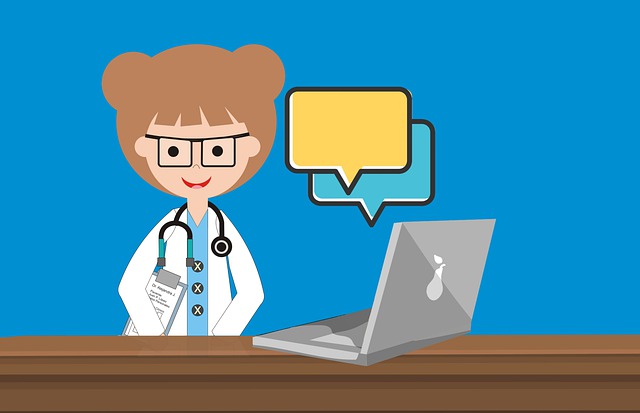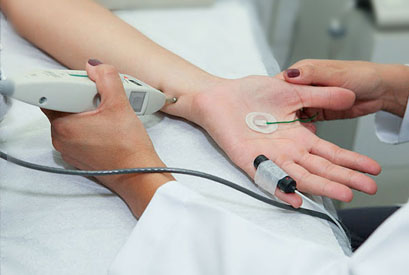
Health information technicians have become a key part of the healthcare system, which has been transformed over the past few years. With the advent of electronic medical record systems, Internet connectivity, and enhanced electronic storage capabilities it has become easier than ever for healthcare professionals to manage and collect large amounts of data.
This role is perfect for EMTs looking for a career in administration that doesn't involve direct patient interaction. This is a career that offers good job security and opportunities for advancement.
What is the role of a health information technologists?
A health information technologist's job is to collect, organize, and process patient medical records. This is done using computer software and classification systems.
These programs help organize and categorize the huge amount of medical data that's collected every day. This allows health care providers to control costs while improving patient service.

Health information technicians may be employed in physician offices, hospitals, home health agencies, or by healthcare agencies. In addition, positions are available in insurance companies and government agencies.
How to become a Health Information Technology Professional
You need an associate's degree in medical technology or another related field to become a health information technologists. You can also earn either a Bachelor's or Master's degree. With a master's, you can develop a more specialized set of skills and become better prepared for advanced careers.
Professional Accreditation of a Health Information Technology Specialist
The American Medical Association(AMA) and American Health Information Management Association(AHIMA) both offer certifications for medical registrars, health information technicians and health information managers. While not required by employers these credentials can give you a competitive edge in your job search and career advancement.
Qualification for the certifications is based on your education and previous work experience. Employers prefer candidates who have at least a Bachelor's Degree. You can earn a certificate from an accredited institution or an associate's degree. You can complete an online program in data science or another related area to learn the skills needed to enter the career.
Your responsibilities can differ depending on the organization that you work for. Software can be used to classify diagnostics, procedures, and other information in order for reimbursement or scientific research. It is also important to comply with privacy laws by keeping up to date on the latest health care legislation.

What is an average salary for health information technicians?
According to Bureau of Labor Statistics' data, the median salary of a health information technician is $39,000. Those who have worked in the field for several years can expect to make more than $70,000 per year.
What are the best places to earn a degree?
BLS states that from 2020 to 2030, there will be a 9 percent increase in the demand for Health Information Technicians. This is a faster rate of growth than the average across all occupations.
FAQ
What is an infectious disease?
An infectious disease is caused by germs (bacteria, viruses, or parasites). Infectious diseases can spread quickly by close contact. You can get measles or mumps, rubella (German whooping cough), pertussis/whooping chives, rubella ("German measles"), measles), pertussis ("whooping cough"), rubella ("German measles"), chickenpox), strep thyme), hepatitis A/B, HIV/AIDS), herpes simplex viruses, syphilis, gonorrhea and chlamydia
What does "health promotion” actually mean?
Health promotion is helping people live longer, stay well, and be healthier. It is more about preventing illness than treating it.
It includes activities like:
-
eating right
-
Get enough sleep
-
exercising regularly
-
Staying active and fit
-
Not to smoke
-
managing stress
-
keeping up with vaccinations
-
avoiding alcohol abuse
-
Regular screenings and checks
-
Understanding how to cope with chronic diseases.
What are the most critical issues that public health faces today?
Many are victims of obesity, diabetes heart disease, and other diseases. These conditions lead to more deaths every year than AIDS or car crashes. In addition, poor diet, lack of exercise, and smoking contribute to high blood pressure, stroke, asthma, arthritis, and other problems.
Statistics
- The healthcare sector is one of the largest and most complex in the U.S. economy, accounting for 18% of gross domestic product (GDP) in 2020.1 (investopedia.com)
- Foreign investment in hospitals—up to 70% ownership- has been encouraged as an incentive for privatization. (en.wikipedia.org)
- The health share of the Gross domestic product (GDP) is expected to continue its upward trend, reaching 19.9 percent of GDP by 2025. (en.wikipedia.org)
- For instance, Chinese hospital charges tend toward 50% for drugs, another major percentage for equipment, and a small percentage for healthcare professional fees. (en.wikipedia.org)
- For the most part, that's true—over 80 percent of patients are over the age of 65. (rasmussen.edu)
External Links
How To
What are the four Health Systems?
Healthcare systems are complex networks of institutions such as hospitals and clinics, pharmaceutical companies or insurance providers, government agencies and public health officials.
The ultimate goal of the project was to create an infographic that would help people to better understand the US health system.
These are some key points.
-
Healthcare spending is $2 trillion annually, representing 17% of the GDP. It's nearly twice the size as the entire defense budget.
-
Medical inflation reached 6.6% in 2015, which is more than any other consumer group.
-
Americans spend on average 9% of their income for health care.
-
As of 2014, there were over 300 million uninsured Americans.
-
Although the Affordable Health Care Act (ACA), has been approved by Congress, it hasn't yet been fully implemented. There are still gaps in coverage.
-
The majority of Americans think that the ACA needs to be improved.
-
The US spends more money on healthcare than any other country in the world.
-
Affordable healthcare would mean that every American has access to it. The annual cost would be $2.8 trillion.
-
Medicare, Medicaid, private insurers and other insurance policies cover 56%.
-
There are three main reasons people don't get insurance: not being able or able to pay it ($25 billion), not having the time ($16.4 billion) and not knowing about it ($14.7 trillion).
-
There are two types of plans: HMO (health maintenance organization) and PPO (preferred provider organization).
-
Private insurance covers the majority of services including doctors, dentists and prescriptions.
-
Public programs cover hospitalization, outpatient surgery, nursing homes, hospice care, long-term care, and preventive care.
-
Medicare is a federal program that provides health coverage to senior citizens. It covers hospital stays, skilled nursing facilities stays, and home care visits.
-
Medicaid is a federal-state program that provides financial aid to low-income families and individuals who earn too little to be eligible for other benefits.